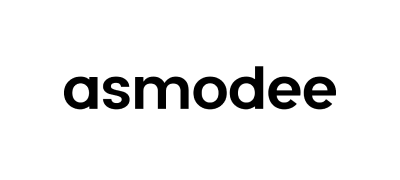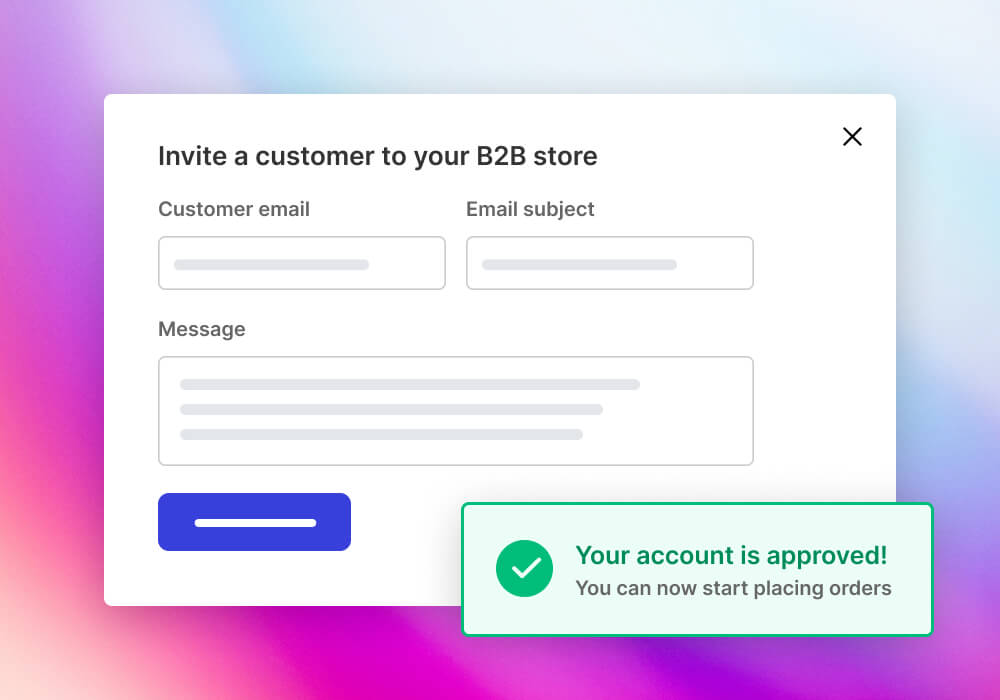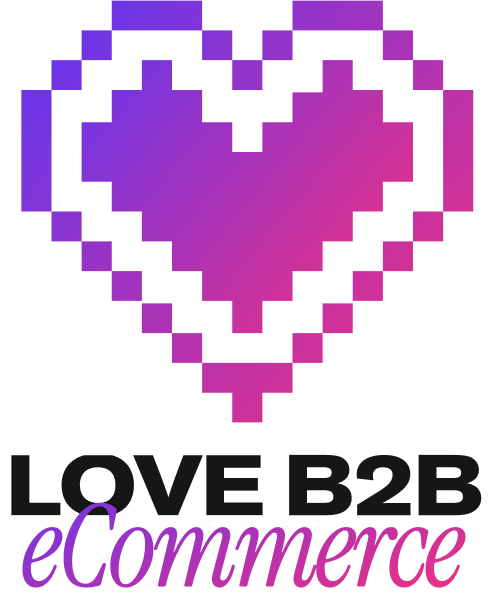Why do you need to level up your B2B customer journey?
From first contact to repeat orders, every step of the B2B customer journey should make life easier for your buyers while delivering real value to your business. Today’s B2B customers expect the same smooth onboarding, personalised experiences, and clear communication they’re used to in the direct-to-consumer (DTC) world. And, with access to your new B2B eCommerce platform, SparkLayer, you’re likely encouraging customers to shift from manual ordering by phone or email to a faster, more convenient self-service experience.
In this guide, we’ll walk through four practical steps to help you optimise your B2B customer journey and drive meaningful results from your Shopify store.
Your guide to optimising your B2B customer journey.
So, you’ve set up your new B2B store. Perhaps you’ve even set up your B2B collection and product pages, or created some B2B content and promotional offers. But how do you successfully get your existing and new customers to begin using your new B2B store?
Whilst there’s no quick answer to this question, there are some practical steps you can take to give your online B2B operation the best chance of taking off and helping automate and scale it in the process!
In this guide, we’re sharing actionable ways to improve and optimise your B2B customer journey.
1. Seamless B2B customer onboarding.
A successful B2B eCommerce journey starts with one crucial step: getting your customers online. Whether you’re launching a new B2B store or migrating from another platform, how you introduce your customers to your B2B store can have a huge impact on adoption, engagement, and long-term success.
The good news? There are several ways to onboard customers effectively, depending on your business model, customer base, and internal resources. The key is making it simple, familiar, and valuable for your buyers from the outset. Here are three ways to do just that: Invite customers manually.
Invite customers manually.
If you're launching with a small number of wholesale buyers or want to pilot your new store with a select group, personalised, manual invites are a great place to start. This hands-on approach lets you tailor the onboarding experience, helping customers feel supported as they transition to a new way of ordering. It’s also a low-risk way to test and refine your internal processes before scaling.
Invite customers in bulk.
For businesses migrating from another platform or working with a large, established customer base, bulk invites are essential. Rather than contacting each buyer individually, you can activate customers at scale, ensuring they can access your new B2B store quickly and start placing orders with minimal disruption. It’s a powerful way to maintain continuity and momentum during a platform transition or brand relaunch.
Use your Sales team to onboard customers.
Even with the best online experience, some B2B buyers may be hesitant to change long-standing habits. That’s where your Sales team can play a vital role. By introducing customers to your digital store through personal outreach, or even placing initial orders on their behalf, via a Sales Agent ordering tool, just to get them used to it.
Sales reps can help ease the transition, show the value of self-service, and build trust in your new platform. Once an order is placed, they’ll receive an email order notification, so if they decide to log in themselves, they’ll see their previous order history, address information, and easy ways to reorder.

One great way to gradually introduce customers to your new online B2B experience is by using your sales team! Your sales team can softly introduce the notion of online B2B ordering and could even place orders on behalf of customers via a sales agent ordering tool, just to get them used to it. The big benefit here is the end customer will begin to see the benefits. Once an order is placed, the customer will receive email order notifications and, if they decide to then login themselves, they’ll see their previous order history, address information, and easy ways to reorder.
2. Tailoring the customer experience to your B2B customer needs.
When it comes to optimising the B2B customer journey, one-size-fits-all doesn’t work. Your buyers expect more than just a digital storefront - they expect an experience that reflects the way they already do business with you.
Unlike DTC, where a single journey can serve thousands of customers, B2B buying journeys are often highly individual. From negotiated pricing and bespoke payment terms to tailored product ranges, your B2B customers need to feel recognised, not treated like just another user.
Tailoring the experience means making sure each customer feels recognised and catered to from the moment they land on your store. That could include:
- Customer-specific pricing that mirrors agreed commercial terms, enabling you to keep track of everything in one place while providing a bespoke experience that works for your business, just like Ennis Fabrics did.
- Custom payment options, such as net terms or purchase orders. Consider providing upfront payment for newer customers and net terms or invoicing for trusted, loyal customers.
- Personalised incentives using SparkLayer’s Discount Engine. This allows you to add discounts and incentives - a great way to re-engage inactive accounts!
Not only does this build trust and familiarity, but it also removes friction at key stages of the buying process, ensuring that customers are more likely to engage with your B2B store and return again.
3. Driving B2B customer adoption with campaigns.
Once your B2B store is up and running, don’t just wait for customers to find it - go out and actively engage them. Targeted B2B customer campaigns are a powerful way to drive awareness, adoption, and repeat orders by communicating the value of your online store in a way that’s relevant to each customer segment.
This is a crucial step in optimising the B2B customer journey, because even the most advanced stores will fall flat without adoption. If your customers don’t understand how to use your store - or why they should - they’re more likely to default to familiar offline methods like phone or email.
To avoid this, focus your campaigns on education and motivation. Help customers see what’s in it for them and guide them through their first few interactions with your store.
Here are a few campaign ideas to help you boost engagement with your B2B store:
- Announce your B2B store launch - let customers know your new store is live, what’s changed, and how it benefits them. Focus on key selling points like time savings, 24/7 ordering, working hours, and the ease of placing orders.
- Segment and personalise your messaging - not all B2B customers are the same. Use segmentation based on industry, location, account size, or order history to tailor your messages, whether through email, paid ads, or sales outreach.
- Create onboarding campaigns - don’t just send one invite and hope for the best! Plan a multi-step email sequence to guide customers through account activation, their first order, and key features of your store.
- Use promotions and incentives - encourage first-time use with limited-time offers, discounts, or exclusive products available only via your B2B store.
Once you’ve built that momentum, it’s time to help customers take control and move toward self-service.
4. Encouraging your B2B customers to go self-serve.
A great B2B customer journey doesn’t end once a customer places their first order - it should continue with a seamless, efficient experience every time they return. That’s where self-serve comes in.
Encouraging your B2B customers to self-serve is one of the most impactful ways to optimise the post-purchase experience. It empowers customers to manage their own buying process, reduces dependency on your team, and builds long-term engagement by making it easier to do business with you.
With SparkLayer, 24/7 self-service buying is built in. When you make full use of these features, your customers benefit from a faster, more flexible experience that keeps them coming back. Here are just a few of the key self-serve features available in SparkLayer that can help you encourage your customers to go self-serve:
- Effortless reordering - make it simple for customers to repeat purchases with saved carts and ‘Buy Again’ options - ideal for regular ordering cycles.
- Bulk ordering - enable customers to add multiple products to their cart using bulk add-to-cart or CSV uploads, streamlining large orders.
- Access to order history and tracking - et customers view previous orders, track shipments, and download invoices directly from their account - no need to contact your Support team.
- Automatic display of payment terms - show tailored payment options (e.g. Net 30, PO numbers) at checkout and within their account to reduce confusion and manual back-and-forth.
- Real-time invoice and credit tracking - give customers visibility of outstanding invoices, credit limits, and balances, so they can stay on top of their accounts with confidence.
Optimising the customer journey isn’t just about getting customers online - it’s about making their experience better once they’re there. By removing barriers and replicating key parts of a manual B2B sales process in a digital format, you make it easier for customers to adopt your store - and stick with it!
Start optimising your B2B customer journey today.
Optimising your B2B eCommerce customer journey isn’t about making huge changes overnight; it’s about taking clear, practical steps that make the experience smoother, faster, and more valuable for your customers.
Whether it’s inviting customers with a personalised onboarding process, tailoring the buying experience to reflect your relationship, launching targeted campaigns, or making full use of SparkLayer’s powerful self-serve features, each step plays a vital role in driving adoption and loyalty.
If you’re a SparkLayer customer, the tools to optimise your journey are already at your fingertips. Now it’s about putting them into action. Because when your B2B customers have a better experience, your business grows with them.
You can explore more of our Love B2B eCommerce series - get access to new video content, customer success stories, and book a personalised 1:1 call with our team of wholesale experts!



















